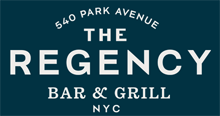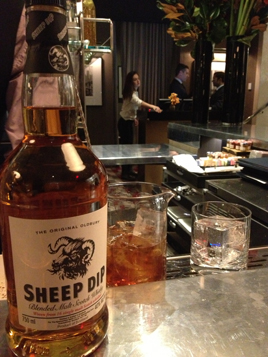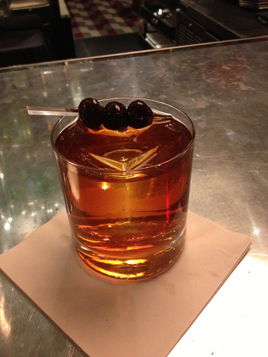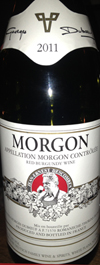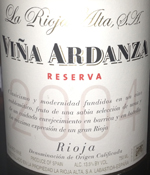Telepan Local
 Tuesday, March 25, 2014 at 08:15PM
Tuesday, March 25, 2014 at 08:15PM  Note: Telepan Local closed in November 2014 after tepid reviews and multiple attempts to change the concept.
Note: Telepan Local closed in November 2014 after tepid reviews and multiple attempts to change the concept.
*
Today, chefs with even modest success barely wait fifteen minutes before opening a second restaurant, and then a third. Michael White will probably open another half-dozen before you’ve finished reading this post.
Hats off to Bill Telepan, who waited almost nine years after the eponymous Telepan on the Upper West Side, to open his second place, Telepan Local, in Tribeca in the old Industria Argentina space. I have no window into the chef’s thinking, but the original restaurant didn’t arrive fully-formed, and that could be why he was in no hurry to open another: my first visit (in 2006) was so disappointing that I waited five years to try it again, this time with far better results. In the most recent Michelin Guide, Telepan received a star for the first time.
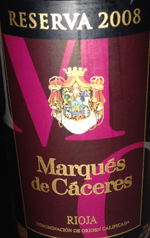 Telepan Local is Telepan’s dressed-down little brother. The design by the Brooklyn studio firm Home isn’t the most original idea, a barn-like structure with exposed wood and subway tile. It’s not a quiet place. Servers wear checked shirts that might’ve been imported from the wilds of Bushwick.
Telepan Local is Telepan’s dressed-down little brother. The design by the Brooklyn studio firm Home isn’t the most original idea, a barn-like structure with exposed wood and subway tile. It’s not a quiet place. Servers wear checked shirts that might’ve been imported from the wilds of Bushwick.
The chef refers to the concept as “American tapas,” a phrase that doesn’t fill me with delight, but I can hardly blame him for copying a format that has been so wildly successful all over town. The menu, which will change frequently, consists of around 25 small plates ($7–17 each), a format that often promotes over-ordering. Sure enough, the server recommended “3–4 dishes per person.” We ordered six for the two of us, and couldn’t finish the sixth.
But it’s possible to dine quite inexpensively here. The two-page wine list offers many bottles under $60. A 2008 Rioja was $54, and with six small plates the bill came to $118 before tax and tip. There aren’t enough good restaurants where you can do that any more.
Telepan’s press interviews promise “seasonal and local” cuisine, which would sound like a broken record, except he was doing it before everyone did it, and he is better at it than most.


Foie Gras Jammers ($12; above left) are a cross between a cookie and a slider. The dough is warm, but the foie seemed a bit over-chilled. Arancini ($7; above right) are lovely, made with bone marrow and parmigiano aioli.


Pigs in a Blanket ($7; above left) rest in a honey mustard dip; the luscious franks (in soft dough) are many grades better than Hebrew National. I couldn’t at all grasp the point of Mushrooms in Parchment ($12; above right), which came across as mushrooms on soggy bread.
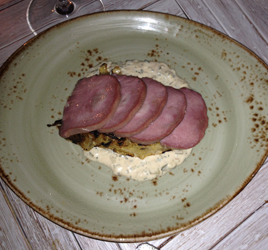

I could dine all day on fatty, pink Corned Tongue ($12; above left) with grilled cabbage and russian dressing. Pork Shoulder ($14; above right) with wilted greens and white beans was terrific, and portioned generously (I snapped the photo after we’d already taken more than half of it).
The service model is clearly intended not to feel too dressed up: coats aren’t checked, and there is no bread service, but there are higher-end grace notes: reservations are accepted (I wouldn’t have come otherwise); wine is served at the right temperature, in the right glassware, and a choice of flat or sparkling water is offered without charge.
Plates were delivered and cleared quickly, and although we never had the sense of being pushed out the door, that was the effect whether intended or not, as we were finished in well under 90 minutes. The restaurant was full on a Wednesday evening, and the staff seemed on top of their game.
I’m not a huge fan of the tapas format, but Bill Telepan makes it compelling. The location isn’t convenient for me to be a frequent guest, but if I lived or worked nearby, I’d be in all the time.
Telepan Local (329 Greenwich Street between Duane and Jay Streets, Tribeca)
Food: A seasonal and locally-sourced menu of American tapas
Service: Perhaps too rushed, but certainly better than it has to be
Ambiance: That barnyard look you’ve seen before
Rating: ★



